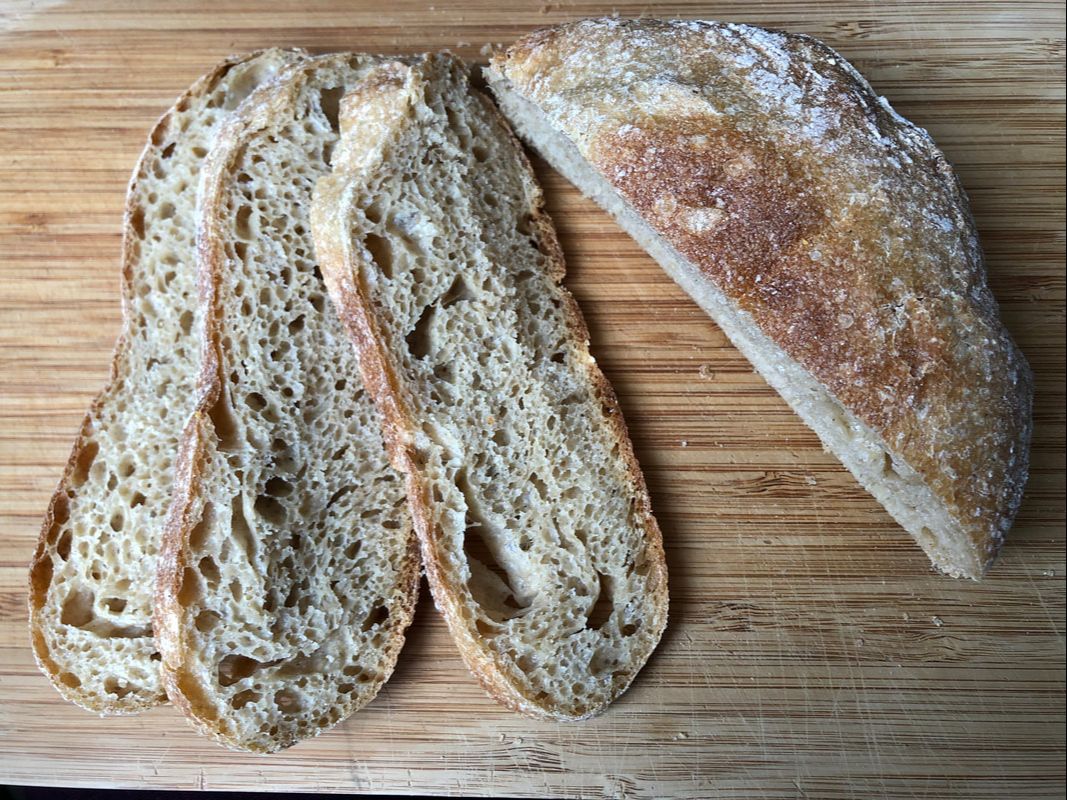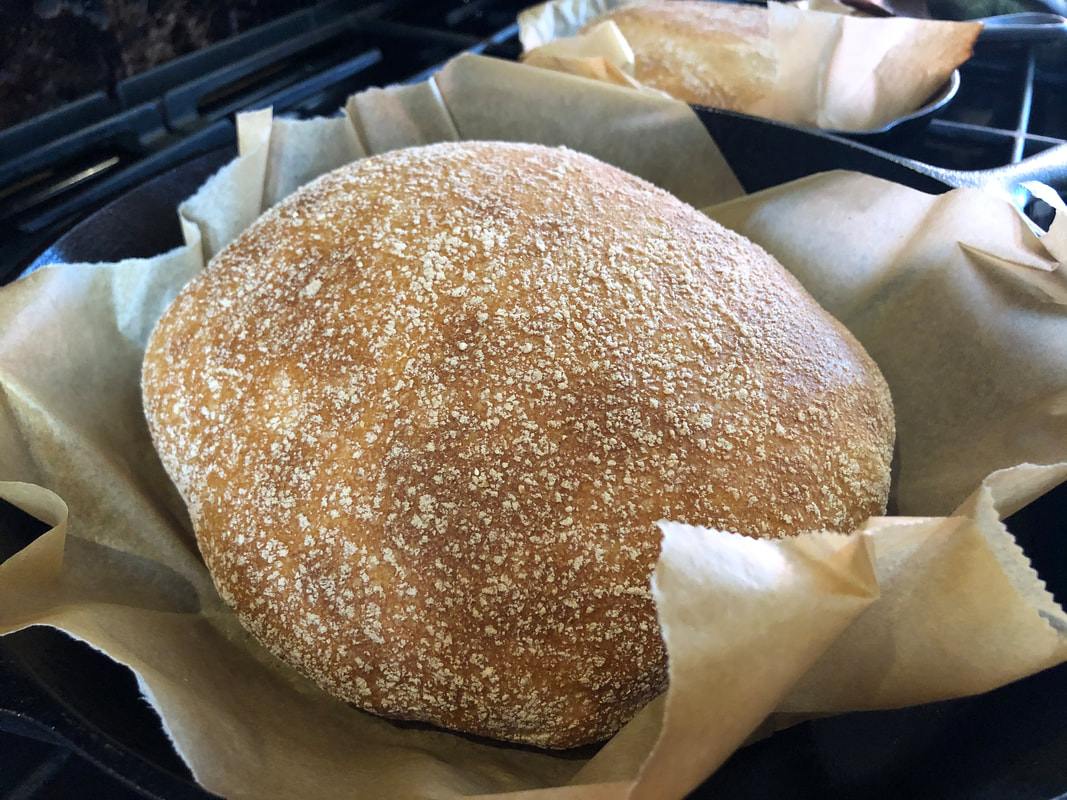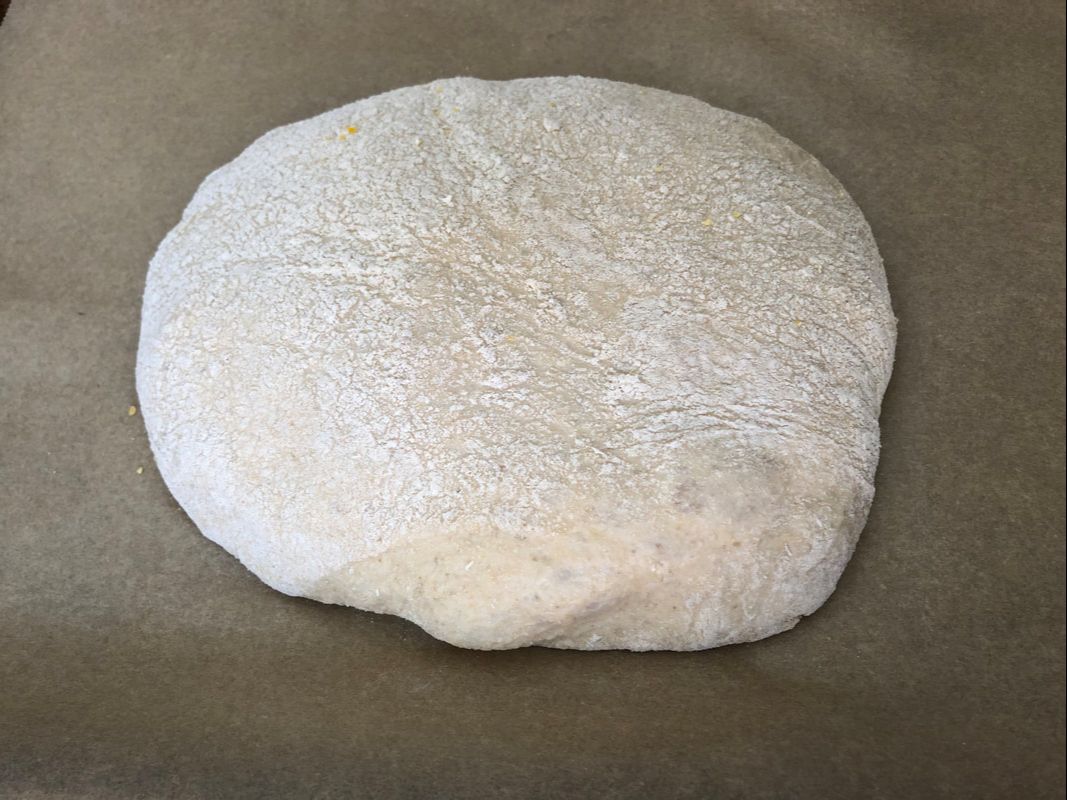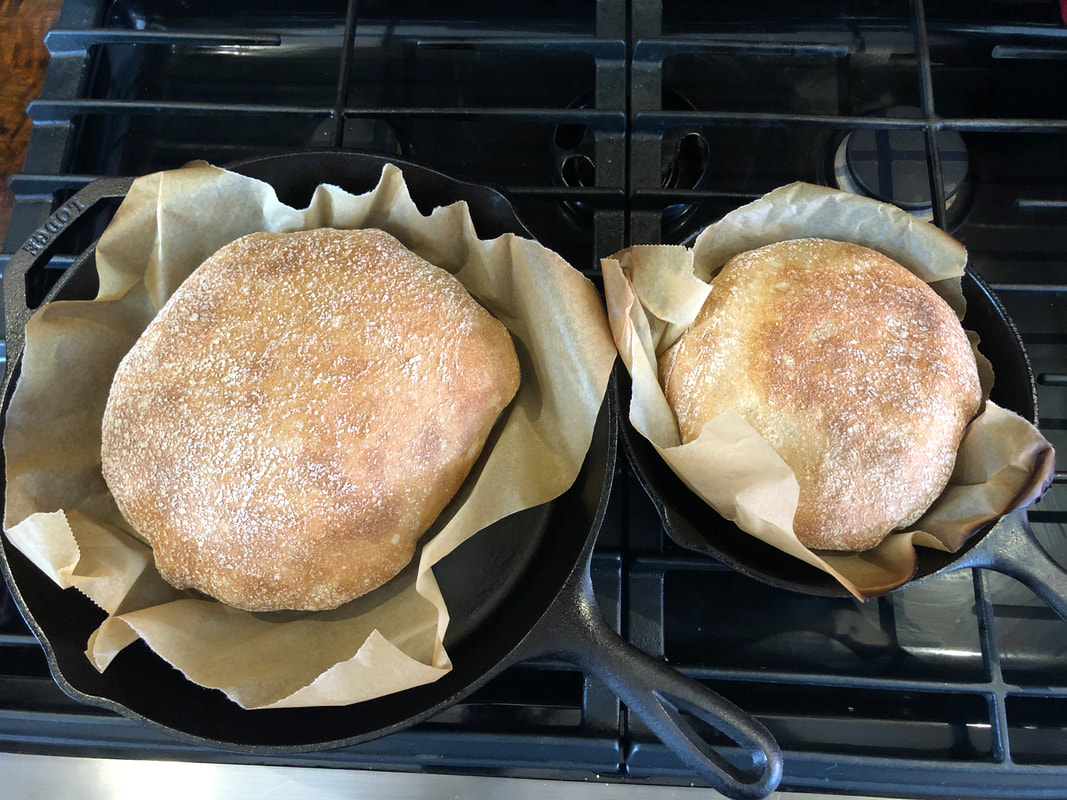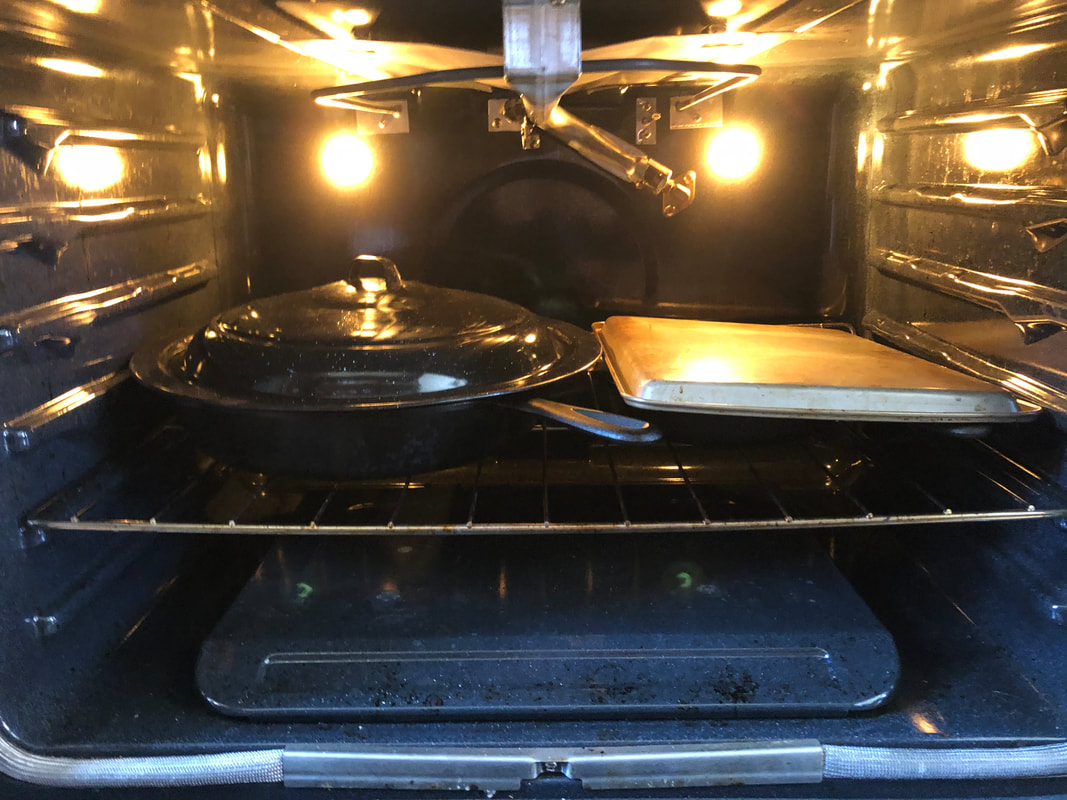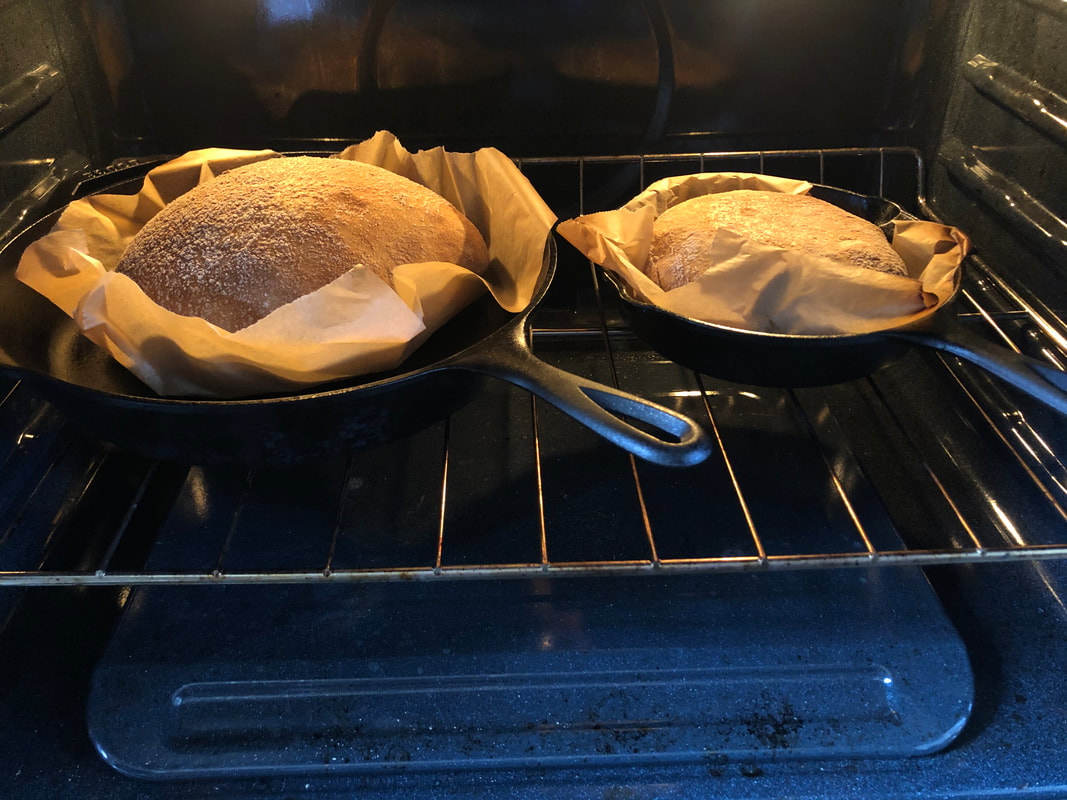Easy Bread Machine Sourdough Ciabatta
This bread is quite easy to make and still gives you that nice airy texture and crispy crust that you'd expect from an artisan bread. A bread machine does the kneading work and the addition of yeast speeds up the rising time, so you don't have to plan your entire day around it. If you have an active starter, you'll have freshly baked bread in less than three hours!
Yield: 2-3 loaves (serves 18)/ Active time: 20 minutes / Total time: 2 hours 45 minutes
|
Helpful Tools:
Ingredients: For the dough
|
Directions:
|
*Dutch ovens help the bread retain moisture as it bakes, but if you don't have one, you can get by with other creative solutions. I still haven't gotten around to buying one yet as I know it would take up a lot of space in my already cramped kitchen. I've found that using a cast iron skillet with a roasting pan lid or even a cookie sheet as a lid works quite well. **You can use whatever flour you have on hand, and it should still turn out fine. The vital wheat gluten is optional, but it does give the bread a nice chewy/stretchy texture. ***Most bread machines take around an hour to complete a dough cycle, so here's you're first stretch of freetime! ****If it's cool in your kitchen, place them in the oven with the light on to aid in rising. |
